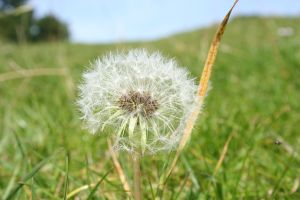
By Michael Ravitsky
 For most people, the turn of Spring is a wonderful time of year – the cold ebbs into the distance while tree leaves and flowers bloom anew. Unfortunately for millions of Americans, Spring also means a runny nose, sneezing, and congestion. Those who experience seasonal allergies – such as allergic rhinitis – have gotten accustomed to the inevitable discomfort. However, have you ever stopped and wondered, why? Why do I get these symptoms, but not my brother? We will take a look at the science behind seasonal allergies and why only some people get them despite being exposed to the same substances as everyone else.
For most people, the turn of Spring is a wonderful time of year – the cold ebbs into the distance while tree leaves and flowers bloom anew. Unfortunately for millions of Americans, Spring also means a runny nose, sneezing, and congestion. Those who experience seasonal allergies – such as allergic rhinitis – have gotten accustomed to the inevitable discomfort. However, have you ever stopped and wondered, why? Why do I get these symptoms, but not my brother? We will take a look at the science behind seasonal allergies and why only some people get them despite being exposed to the same substances as everyone else.
Over one-third of children and around one-fourth of adults experience allergies. These numbers appear to be increasing over time. However, except for the idea that genetics may have some influence on susceptibility to allergies, the scientific community has been unable to pinpoint exactly what causes allergies and why people as a whole are experiencing more allergies. One idea is that our environments are becoming increasingly polluted, what with motor vehicles, cooking fumes, and miscellaneous industrial fumes becoming increasingly prevalent both within our homes and outside. This in turn is making our immune systems more sensitive and reactionary to foreign particulates.
Over one-third of children and around one-fourth of adults experience allergies.
(On a side note, this is why allergy medicines are called antihistamines)
Under normal bodily function, this reaction occurs in response to viruses, bacteria, parasitic fungi, and other harmful organisms. The aforementioned mistake is this: for many people, relatively harmless substances will induce this same response. Examples include dust particles, pet dander, and pollen. In reality, none of these substances poses a serious biological threat to our systems; unfortunately, our bodies don’t realize this. For reasons unknown, pollen is particularly prolific in this physiological charade, which is why Spring causes millions of sneezes and watery eyes.
Pollen is a relatively fine powder containing the male sex-cell-producing organs of seed plants (gametophytes). The blooming of so much life comes at a cost to sufferers of seasonal allergies; every Spring, millions of trees release enormous amounts of pollen in attempt to reproduce. Certain grasses and weeds pollinate at different times of the year, which is why people particularly sensitive to pollen will continue to experience symptoms even long after Spring passes. For most people, though, it is Spring that brings about this annual anomaly.
– Submitted by Guest Author, Michael Ravitsky of factorypure.com.
